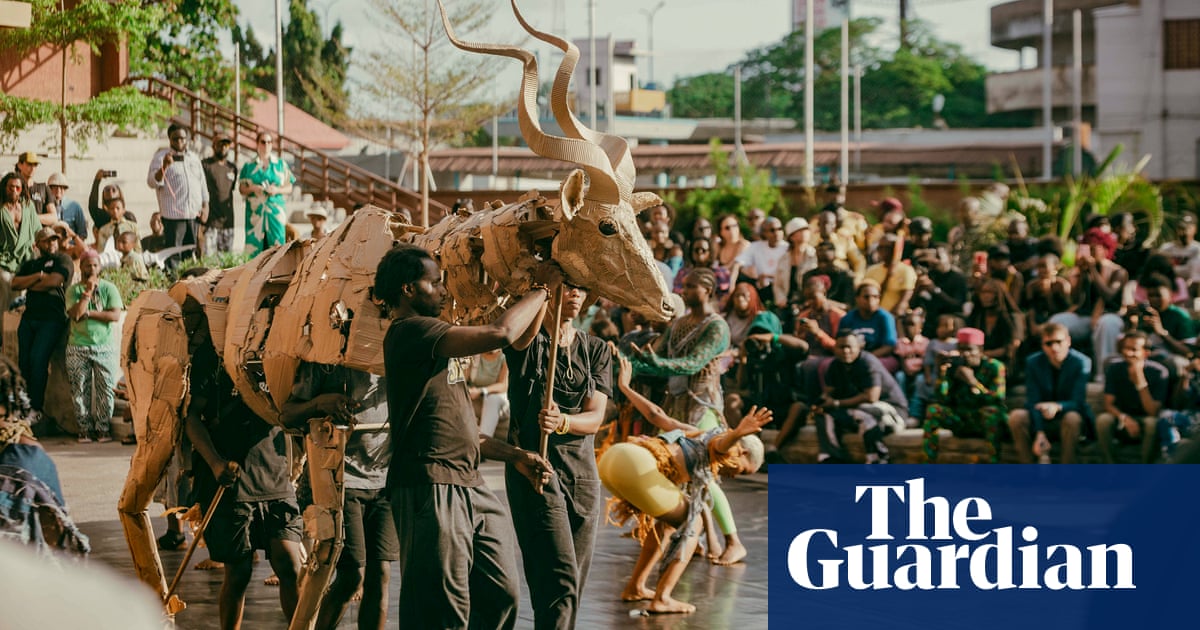Hundreds of life-size animal puppets have begun a 20,000km (12,400 mile) journey from central Africa to the Arctic Circle as part of an ambitious project created by the team behindLittle Amal, the giant puppet of a Syrian girl that travelled across the world.
The public art initiative called The Herds, which has already visited Kinshasa and Lagos, will travel to 20 cities over four months to raise awareness of the climate crisis.
It is the second major project fromThe Walk Productions, whichintroduced Little Amal, a 12-foot puppet, to the world in Gaziantep, near the Turkey-Syria border, in 2021. The award-winning project, co-founded by the Palestinian playwright and director Amir Nizar Zuabi, reached 2 million people in 17 countries asshe travelled from Turkey to the UK.
The Herds’ journey began in Kinshasa’s Botanical Gardens on 10 April, kicking off four days of events. It moved on to Lagos,Nigeria, the following week, where up to 5,000 people attended events performed by more than 60 puppeteers.
On Friday the streets of Dakar inSenegalwill be filled with more than 40 puppet zebras, wildebeest, monkeys, giraffes and baboons as they run through Médina, one of the busiest neighbourhoods, where they will encounter a creation by Fabrice Monteiro, a Belgium-born artist who lives in Senegal, and is known for his large-scale sculptures. On Saturday the puppets will be part of an event in the fishing village of Ngor.
The first set of animal puppets was created by UkwandaPuppetryand Designs Art Collective in Cape Town using recycled materials, but in each location local volunteers are taught how to make their own animals using prototypes provided by Ukwanda. The project has already attracted huge interest from people keen to get involved. In Dakar more than 300 artists applied for 80 roles as artists and puppet guides. About 2,000 people will be trained to make the puppets over the duration of the project.
“The idea is that we’re migrating with an ever-evolving, growing group of animals,” Zuabitold the Guardian last year.
Zuabi has spoken of The Herds as a continuation of Little Amal’s journey, which was inspired by refugees, who often cite climate disaster as a trigger for forced migration. The Herds will put the environmental emergency centre stage, and will encourage communities to launch their own events to discuss the significance of the project and get involved in climate activism.
“The idea is to put in front of people that there is an emergency – not with scientific facts, but with emotions,” said The Herds’ Senegal producer, Sarah Desbois.
She expects thousands of people to view the four events being staged over the weekend. “We don’t have a tradition of puppetry in Senegal. As soon as the project started, when people were shown pictures of the puppets, they were going crazy.”
Growing as it moves, The Herds will make its way from Dakar to Morocco, then into Europe, including London and Paris, arriving in the Arctic Circle in early August.
